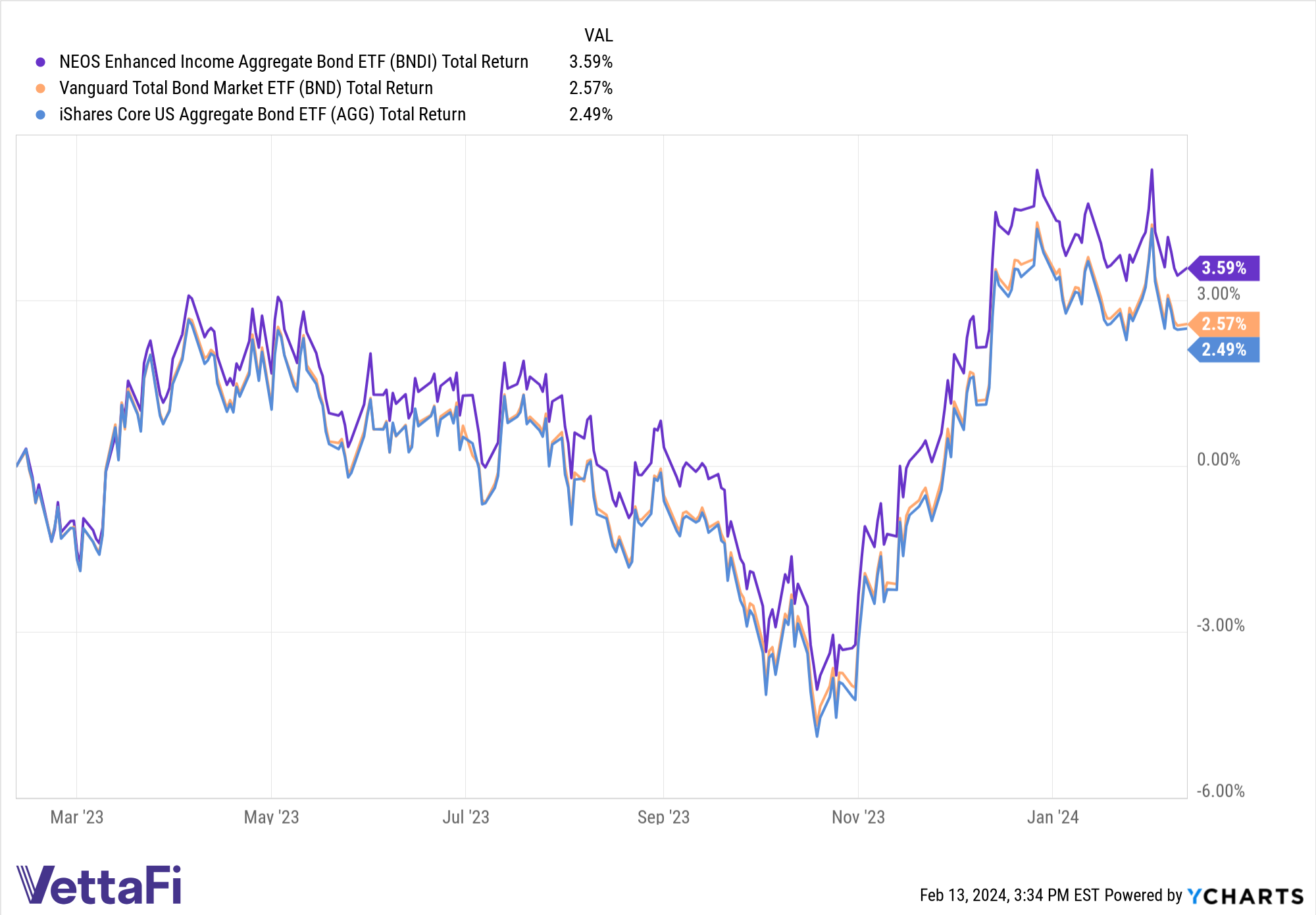A higher than anticipated January CPI print sent yields on the 10-year Treasury climbing Tuesday. The persistence and stickiness of inflation clouds the anticipated market narrative around rate cuts in the first half. Regardless of the exact timing on when rate cuts happen, the outlook for bonds remains bright as investors extend their exposures.
Everywhere you turn, the rallying cry of “bonds are back” resonates, and for good reason. With the threat of interest rate hikes largely behind us, bond yields remain elevated but offer a reduced risk profile compared to last year. Investors are slowly moving into longer duration bonds after a year when short duration proved both profitable and prudent.
While the familiar giants remain ever popular, there are notable newer funds worth consideration. The NEOS Enhanced Income Aggregate Bond ETF (BNDI) is one such fund that consistently outperforms the broad market. BNDI offers enhanced income opportunities in bonds. The fund invests in the iShares Core US Aggregate Bond ETF (AGG) and the Vanguard Total Bond Market Index Fund ETF Shares (BND). In the last year, BNDI generated better total returns than AGG and BND.

The income and capital gains BNDI receives from its bond exposures are enhanced by adding monthly income from the fund’s put-option strategy on the S&P 500. The strategy includes selling short puts and buying long puts to protect against volatility.
The strategy may offer positive returns in both flat and rising equity markets. It may also generate positive returns in moderately declining equity markets. This is possible if the premium earned from the puts is greater than the cost to close out the positions. BNDI may also offer a lower correlation to certain risk factors such as duration, credit, and inflation risk.
BNDI’s put options aren’t ETF options but S&P 500 index options. These options are taxed favorably as Section 1256 Contracts under IRS rules. The IRS treats options held at the end of the year as if the investor had sold on the last market day of the year at fair market value. Most importantly, the IRS taxes any capital gains as 60% long-term and 40% short-term, no matter how long the fund held them.
This treatment can offer noteworthy tax advantages. In addition, the fund’s managers also may engage in tax-loss harvesting opportunities throughout the year on the put options.
BNDI currently has an expense ratio of 0.58%.
For more news, information, and analysis, visit the Tax-Efficient Income Channel.

